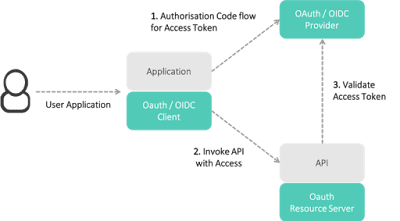Curl, the wget with steroids. https://curl.se/
1. response headers
curl -I http://localhost:8081/customers
Set-Cookie: KC_REDIRECT=/customers; Path=/; HttpOnly
X-Content-Type-Options: nosniff
X-XSS-Protection: 1; mode=block
Cache-Control: no-cache, no-store, max-age=0, must-revalidate
Pragma: no-cache
Expires: 0
X-Frame-Options: DENY
Location: http://localhost:8081/sso/login
Transfer-Encoding: chunked
Date: Sun, 27 Dec 2020 15:38:57 GMT
2. gzip call
Content-Encoding: gzip
Content-Type: application/json
curl -v -H "Content-Type: application/json" -H "Accept-Encoding: gzip" http://127.0.0.1:8080/fourkb -o four.json.gz
curl -v --compressed
-verbose
3. curl get
curl -k --max-time 30 -X GET 'https://10.10.10.31:8080/rest/accounts?user=test&password=test&channel=1&client-ID=1020'
--request GET
4. curl post body:
curl -k --request POST 'https://10.10.10.31:8080/rest/num-accounts' --header 'Content-Type: application/json' --data-raw '{"user":{"user":"testuser","password":"welcome1","request-channel":1},"client-ID":"12345"}'
-d '{"query":{"match_all":{}}}'
-d, --data <data>
5. ssl
to avoid self-signed cert:
-k
curl --cacert cacert.pem https://self-signed.badssl.com
6. cookie
--cookie "jsessionid=123"
7. timeout
--max-time 30
8. header
curl -H "Authorization: Basic YXBpdXNlcjphcGlwd2Q=" http://devweb.cl/status
9. basic user?
--basic --user "redemption-br:GUkboMIZ"
10. for brackets
curl -g
otherwise:
curl: (3) bad range in URL position 47:
11. download
-O -J
curl -k -O -J https://www.devweb.cl/file.txt
12. linux/windows
linux:
curl -X POST http://172.18.235.19:8773/api/v1/publishEvent --header 'Content-Type: application/json' --data-raw '{"user":{"user":"testuser","team":"welcome1","request-channel":1},"client-ID":"12345"}'
windows:
curl -X POST http://127.0.0.1:8773/api/v1/publishEvent --header "Content-Type: application/json" --data-raw "{\"user\":{\"user\":\"testuser\",\"team\":\"welcome1\",\"request-channel\":1},\"client-ID\":\"12345\"}"


















































